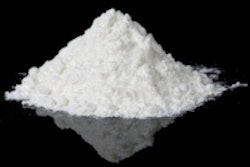CHICAGO - The best way to detect illicit cocaine smuggling by body packing "mules" may be to perform CT scans of the suspects, reported a forensic radiologist at a 2010 RSNA press briefing in Chicago.
CT appeared to better visualize packets of cocaine wrapped in condoms or other containers that are either swallowed by the drug traffickers or inserted into body orifices, said Patricia Flach, MD, of the Institute of Forensic Medicine at the University of Bern in Switzerland.
Flach said that authorities often ask radiologists to help determine if a person believed to be a mule is transporting contraband. "In these cases, it is important for us to know that we have identified all the drug containers in a body, both for legal purposes and for health purposes of the patient," she said.
In Switzerland and other European nations, drug smuggling penalties may hinge on the amount of drug being smuggled, she explained. She also said that in some cases the mules are in serious medical distress due to leakage of the packets, requiring surgical and other interventions.
"However, there was no research telling us which imaging modality was best in detecting cocaine containers in the stomach, intestines, or other body orifices," she said.
In the study, 27 of the imaging exams were CT, 50 were digital radiography, and 12 were low-dose linear slit digital radiography (Lodox Systems, Benmore, South Africa). All of the drug containers were identified in patients screened with CT, she said, making it the radiological choice for interrupting drug trafficking.
"CT had 100% sensitivity," Flach said. "This suggests that examinations to detect intracorporal drug containers should be performed by CT rather than the other modalities, in order to apply the highest accuracy in both medical and legal investigation."
Low-dose linear slit digital radiography achieved 85.7% sensitivity and digital radiography was about 70% sensitive in detecting the containers.
The study included 50 suspected drug traffickers. Eventually it was proven that 43 of the individuals were, in fact, mules carrying containers of cocaine that ranged in size from 1 g to 10-12 g.
Flach said two of the people in the study were treated for acute cocaine intoxication due to leaking packages that required surgical intervention. They both survived.
Future use of CT in uncovering possible cocaine trafficking would be to investigate low-dose exposure techniques and to train radiologist on what the various containers look like on CT scans, she suggested.
"There are hospitals in the states that will use CT scans to look for these cocaine packets in people," said Judy Yee, MD, professor of radiology at the University of California, San Francisco (UCSF) and chief of the radiology service at the San Francisco Veterans Affairs Medical Center. "It is not disseminated throughout the states, but there are some hospitals that will use this."
By Edward Susman
AuntMinnie.com contributing writer
December 1, 2010
Related Reading
Karachi connection: CT best for busting heroin smugglers, December 1, 2003
Copyright © 2010 AuntMinnie.com



















